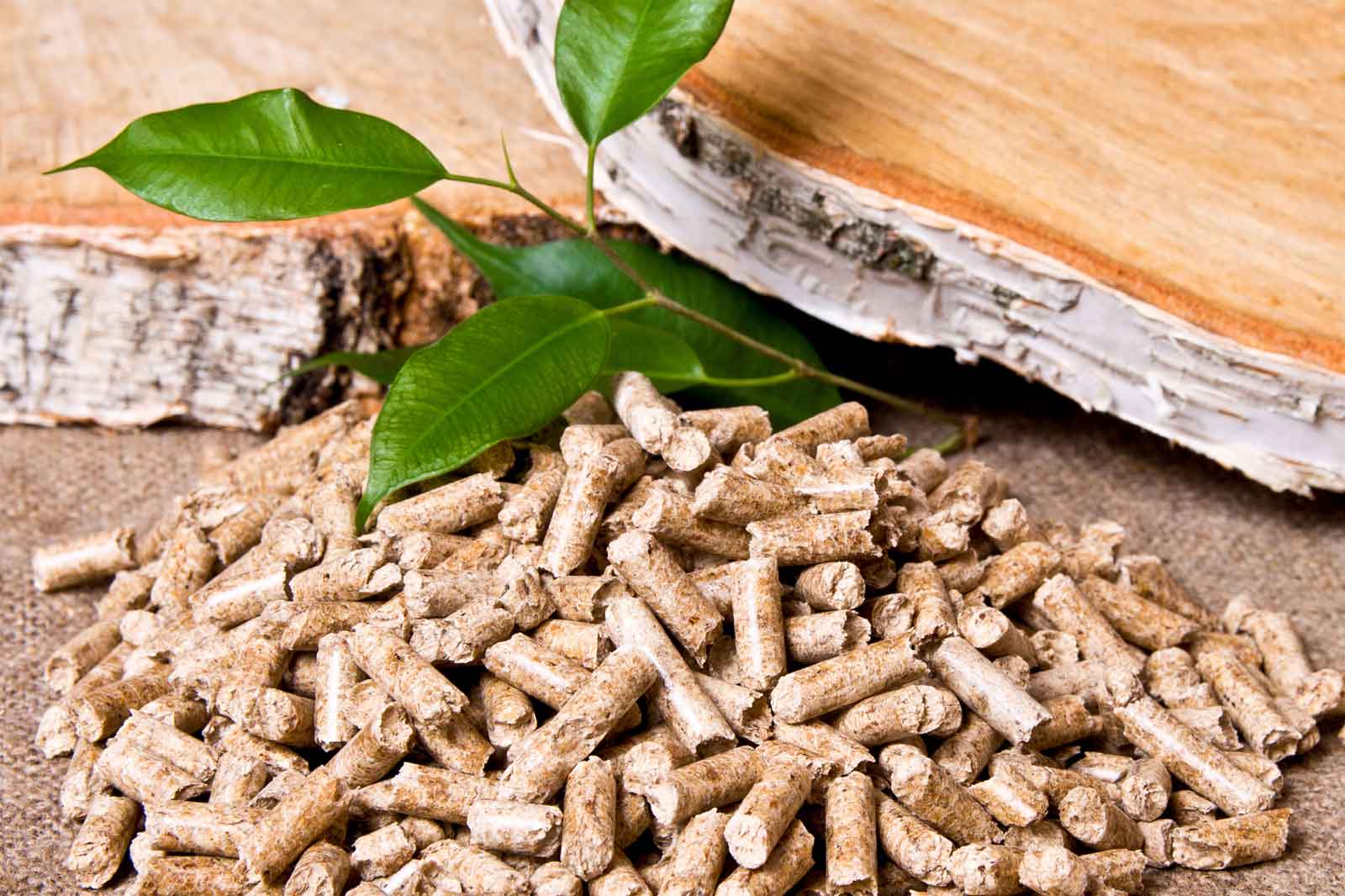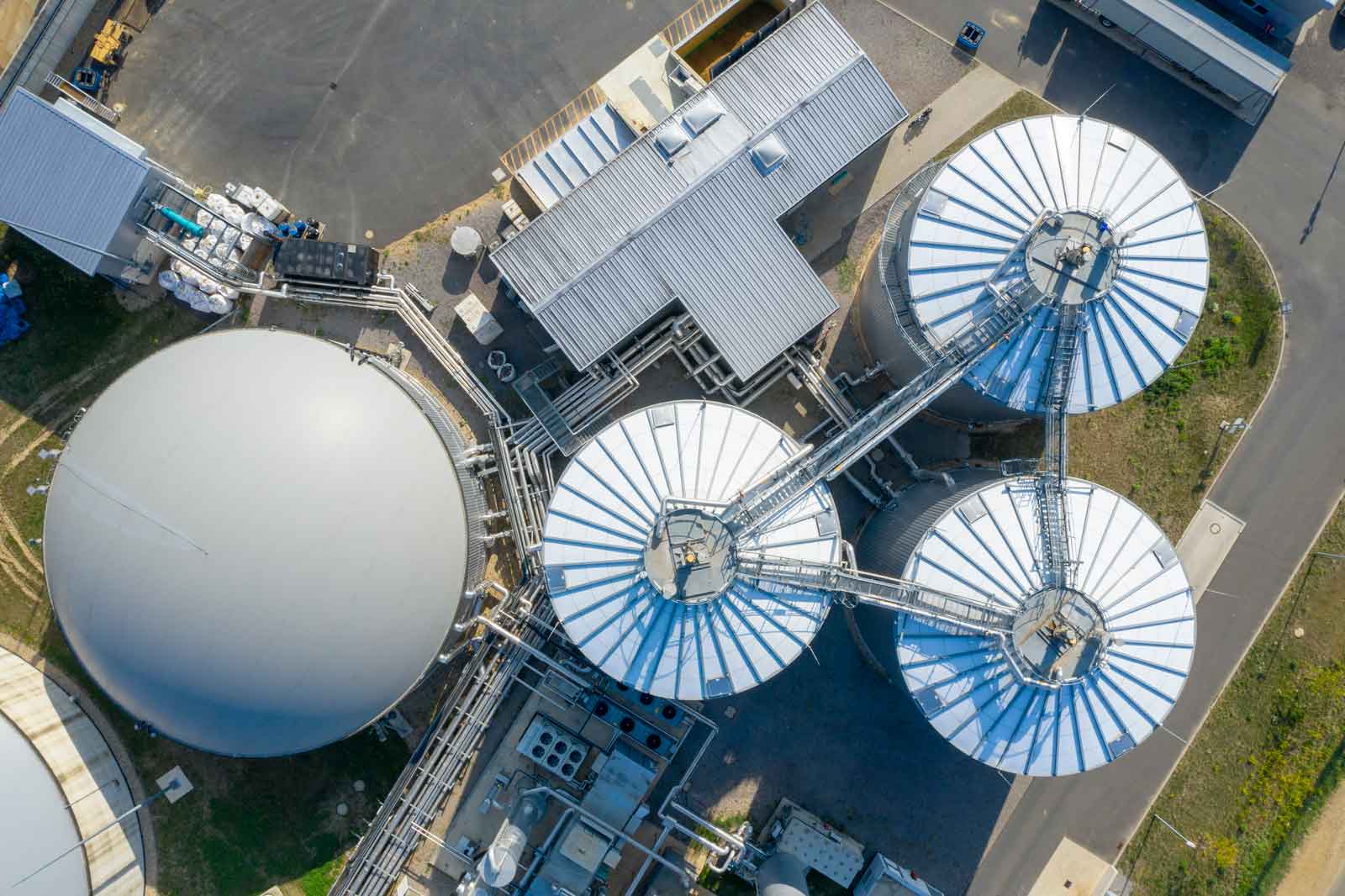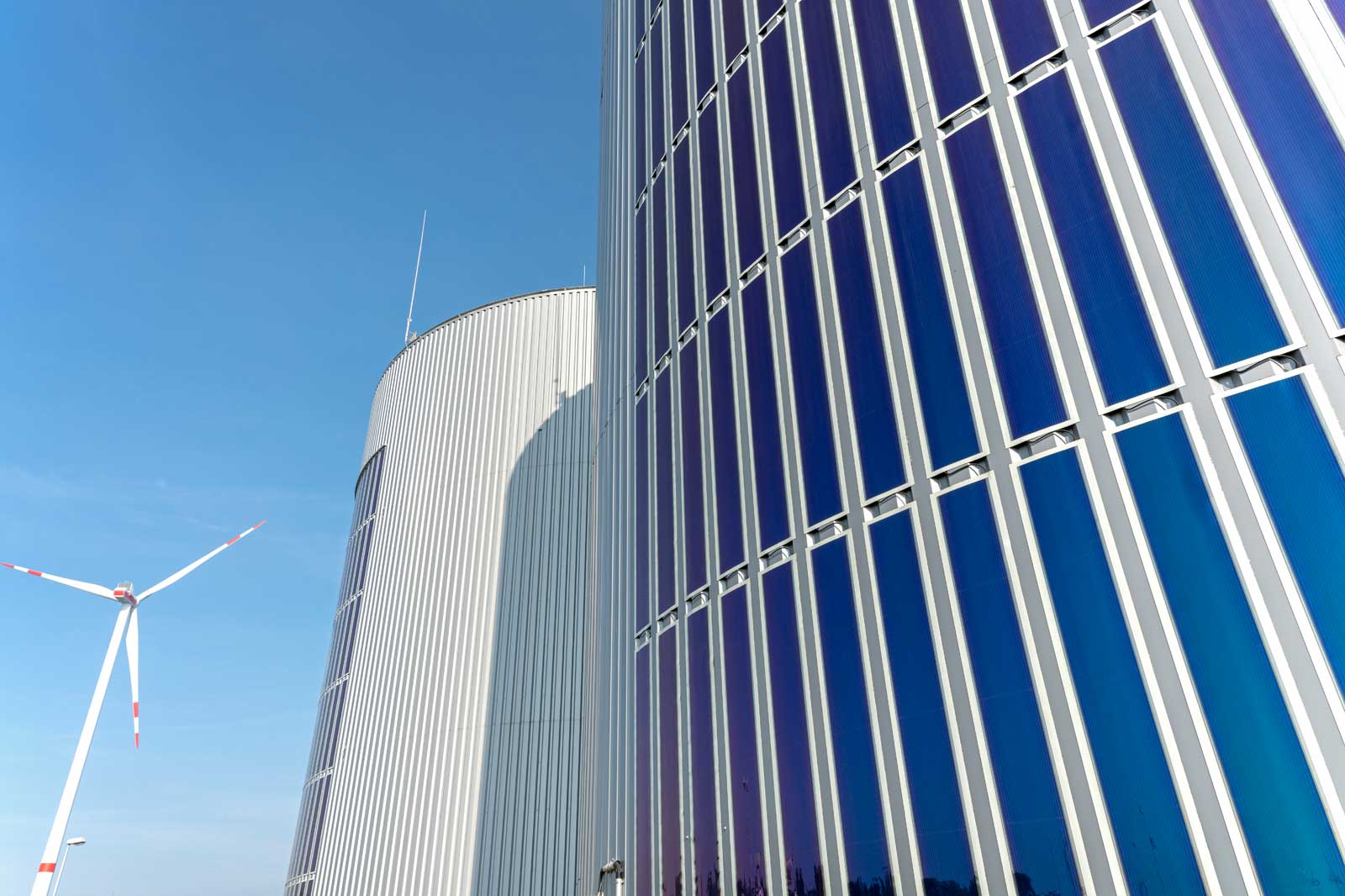Biogas is a true multi-talent: biogas essentially consists of methane, carbon dioxide and small amounts of water and trace gases. The almost CO2-neutral energy supplier is generated in a biogas plant. In a closed tank (fermenter), the biogas is produced with the aid of bacteria from biomass such as green plants and manure or slurry.
Biogas is a versatile product: It can be used locally in a combined heat and power plant (CHP) directly to generate electricity and heat. Processed at natural gas level, it can be used multifunctionally via the natural gas network. This includes classic electricity and heat generation, e. g. in natural gas CHPs, heating of buildings and the use as fuel for natural gas vehicles.




